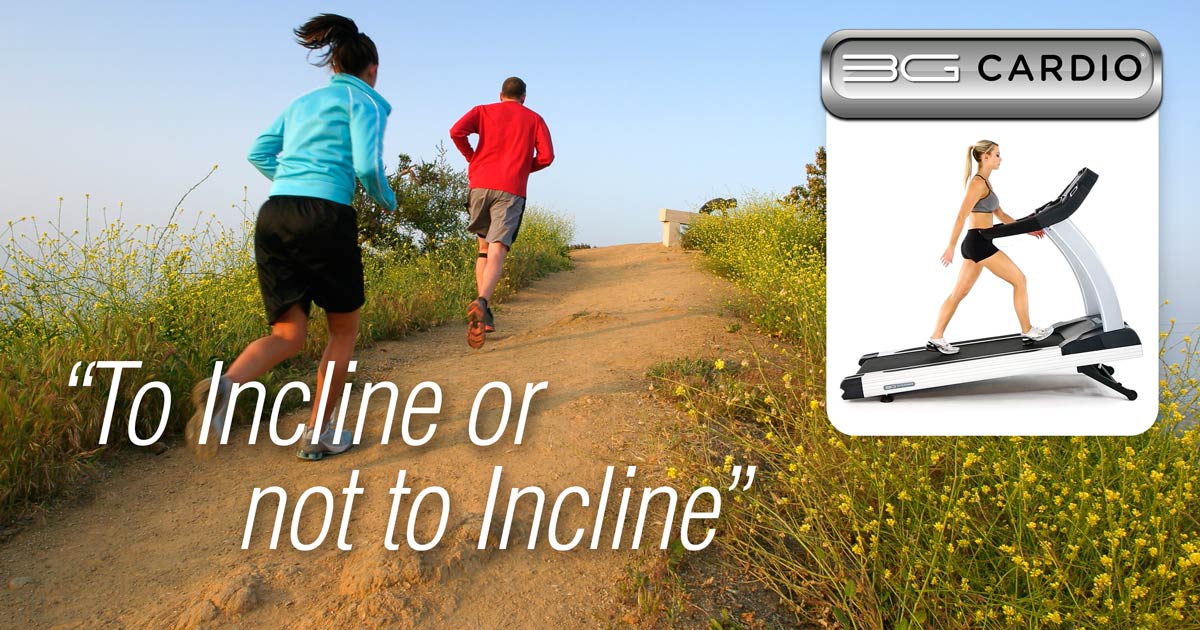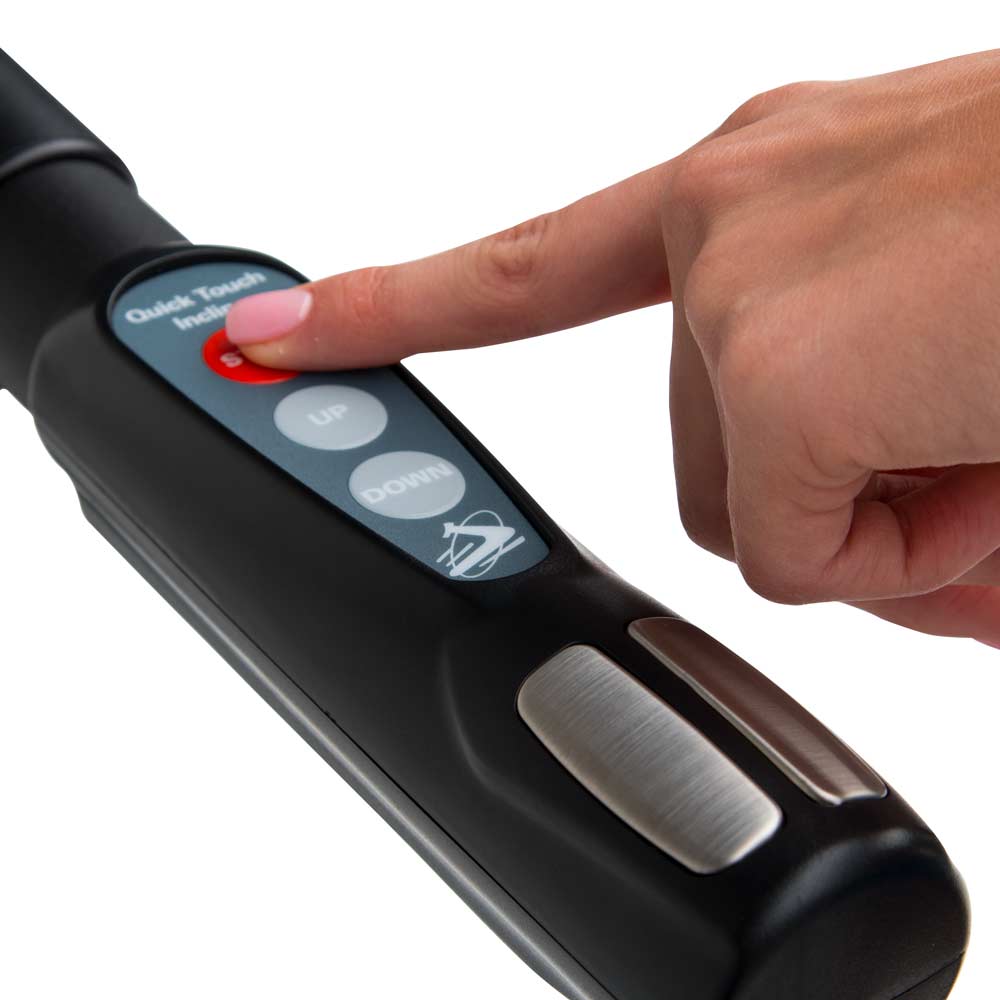
14 Jun How much of an incline should you use on a treadmill?
By AARON DORKSEN – 3G Cardio Fitness Editor
“To incline or not to incline, that is the question.”
With apologies to William Shakespeare for tweaking his famous line, today’s blog topic addresses how to use the incline function that almost all treadmills offer.
Is it beneficial to use the incline feature? When should you use it? And how high should you go?
Let’s tackle those questions one at a time.
Starting out
Just about everyone from beginners to marathon runners can benefit from setting their treadmill on an incline.
Even beginning walkers are encouraged to try the treadmill on a 1 or 2 percent incline. This will better simulate slight elevation changes one would experience outside, as well as wind resistance.
As soon as a person feels comfortable with their balance on the treadmill they should strive to walk without holding onto the handrails. This will force the muscles to work a little harder to stabilize the body.
Step it up
Once you’re really comfortable on the treadmill and have achieved a basic fitness level to regularly walk for 20-30 minutes at a time, you will really benefit from increasing the incline from anywhere between a 2-4 percent grade.
This will simulate walking or running through a park or area with low foothills. With most treadmills you can easily set up manual or pre-programmed hill courses that will allow you to experience interval training – bursts of faster speeds with bigger inclines followed by slower, flatter spans.
An example would be to walk or run on a 1 or 2 percent incline for the first 5 minutes, then ramp it up to 3-4 for 3 minutes, followed by going back down to 1 or 2 for 2 minutes. Repeat this for another 10 minutes to get a really solid 20-minute workout and if you’re feeling up to it repeat again for a 30-minute workout.
You can tweak your interval training to fit you goals and fitness levels. Work with a trainer for best results, especially if you haven’t been active for a while or have pre-existing health conditions.
Some people like to walk for part of the interval training and then jog for other segments.
Advanced workout tips
I advise people to avoid running on inclines higher than 6 until they can run at a slow jog for 4-5 miles.
Why should you push the incline button?
As soon as you start an incline workout, your body will really be challenged. The leg and butt muscles have to work extra hard to drive uphill against gravity.
When you’re exercising at an incline of 3-4 percent or higher, speed isn’t the goal. Strive to maintain a strong, steady driving pace as you sculpt your muscles and improve your cardio health.
For advanced athletes, try doing an interval workout with the incline varying between 4-10 percent, going up and down throughout. The higher you go, the harder you’ll work your glutes.
Healthy lifestyle
Include aerobic exercise, such as treadmill walking, for 20 to 30 minutes a day, three to five days per week.
A well-rounded fitness regimen should also incorporate stretching every day and strength training several times a week.
Take caution
In a study published by Gait & Posture, when people walked at a nine-percent incline, they increased the activation of their gastrocnemius (calf muscle) by 175 percent, their biceps femoris (quad muscle) by 635 percent, and their gluteus maximus (buttocks) by 345 percent, compared to when they walked at zero incline.
All of those muscles are worked at a zero incline, but the amount their workload increases goes up each time the incline is raised.
Take caution when raising the incline, though, and make sure you’re using good posture. Sometimes people hang onto the handrails at higher inclines and have poor posture.
Whether you’re walking, jogging, or sprinting, if you can’t keep your balance with your hands free from the guardrails then the machine is set at too high of an incline. You should bend slightly at the ankles and drive forward with your quads and glutes.
If you’ve had hip flexor or knee problems, be extra cautious about exercising at higher inclines.
3G Cardio fitness editor Aaron Dorksen’s blog deals with a variety of fitness topics, ranging from workout tips, motivational ideas and feature stories on how exercise impacts people’s lives. Consult a doctor before making any significant changes in your exercise routine or diet. E-mail him with comments, questions or ideas for future blogs at aaron@3Gcardio.com








Sorry, the comment form is closed at this time.